2024 INFRASTRUCTURE REPORT

POPULATION GROWTH DRIVING ROAD AND TRANSIT PROJECTS




POPULATION GROWTH DRIVING ROAD AND TRANSIT PROJECTS


The construction industry stands on the cusp of a significant growth period fuelled by increased government investment in infrastructure projects and the ever-growing demand for resource extraction. Yet, this exciting outlook is tempered by unique challenges. Manufacturing capabilities are experiencing a decline, environmental concerns necessitate an increased focus on sustainability, and supply chain constraints continue to disrupt project timelines and budgets.
Despite these complexities, the Link-Belt brand has a proud legacy spanning 150 years. Throughout our history, we’ve consistently pursued innovative solutions that optimize efficiency across every aspect of construction operations. Today, our commitment to progress continues with the seamless integration of cutting-edge technologies into our machinery. These advancements empower operators with unprecedented levels of customization and automation, keeping them informed, engaged, and in control.
This dedication to innovation is reflected in Link-Belt Excavators’ core purpose: providing reliable and innovative machinery that contributes to the strength and prosperity of the communities we serve. We achieve this by nurturing strong relationships with our dealer network, delivering exceptional products, and fostering a vibrant and dynamic company culture. These core values position us for continued relevance and growth not just in 2024 but well beyond.
Link-Belt Excavators is proud to sponsor On-Site Magazine’s 2024 Canadian Infrastructure Report. Looking ahead, we believe in collaborative solutions, and together with our partners, we can dismantle the barriers hindering construction success. Collectively, we can build essential infrastructure, foster stronger connections, and optimize resource allocation across Canada, ensuring a brighter future for our communities.

Despite lingering uncertainty about the economy and disputes between the provincial and federal governments over governance, it’s pretty much full steam ahead for road and public transit projects across Canada.
In British Columbia this past December, the long-awaited Surrey-Langley SkyTrain extension took a big step towards seeing shovels in the ground when project propo-
nents released the official names for eight new stations.
Green Timbers, 152 Street, Fleetwood, Bakerview-166 Street, Hillcrest-184 Street, Clayton, Willowbrook, and Langley City Centre Stations represent the heart of the $4-billion, 16-kilometre above-ground extension of the Expo Line. If all goes to plan, commuters will be able to travel on rail between Langley and downtown Vancouver in just over an hour.
Port Coquitlam mayor Brad West, chair
of the regional mayors’ council, underscored the extension’s importance to ongoing population growth, predicting 50,000 new residents will continue to move into Metro Vancouver annually.
“By investing in public transit, we are helping make the lives of these new British Columbians easier while simultaneously improving the quality of life and travel for everyone else,” West told journalists when the station names were announced.
The project is being delivered through three separate contracts for the guideway,
stations, and track work and systems. The province has announced the firms selected to respond to the requests for proposals. Contracts are expected to be signed early this year. Some advance work started four years ago, including utility relocations and the now-completed widening of Fraser Highway between 140 and 148 Streets. Proponents say they expect construction of the extension itself to begin by year’s end.
Kelly Scott, president of the B.C. Road Builders and Heavy Construction Association, says the work stands to help the economy and keep his members and others in the construction sector busy.
“It will be fairly active for everybody,” Kelly says, adding it will help ease the housing shortage by enabling growth outside already-dense urban centres. “Rather than driving for an hour and a half, people living in the Surrey area will be able to jump onto a SkyTrain and commute into Vancouver.”
The SkyTrain extension isn’t B.C.’s only major porject. The province is on the cusp of forming a Fraser River Crossing tunnel project team. Projected at $4.15 billion with possible completion by 2030, the eight-lane tunnel will replace the old Massey Tunnel and look to ease commuter and commercial traffic along Highway 99 around Vancouver and south towards Washington State.
The Fraser Valley Highway 1 Corridor Improvement Program also continues, with about $1 billion being spent to improve and widen sections between Langley and Abbotsford, and Sumas Prairie to Chilliwack. Improvements also continue along Highway
1 between Kamloops and Golden, and crews in multiple areas are mitigating impacts on roads from severe weather.
The timing of these works is fortuitous, says Scott, “Site C is coming to an end, the Kicking Horse project is coming to an end, and the pipeline is coming to an end. There’s going to be 5,000 to 15,000 workers in our industry looking for work.”

an 18-kilometre corridor from the downtown southwards.
In Alberta, Calgary’s Green Line LRT continues to move towards construction with utility relocation and design work underway, along with negotiations with the lead contractors chosen to develop the first stretch of the two-phase, $5.5-billion project.
With 29 stations planned, the 46-kilometre line stands to become the largest public infrastructure project in Calgary’s history and the city’s first rail line to operate low-floor trains. The line will be powered through wind generation and will run between Calgary’s north-central and southeastern boundaries, connecting with the Red and Blue lines downtown.
Bow Transit Connectors has been selected as development partner for Phase 1, which will see 13 stations built along
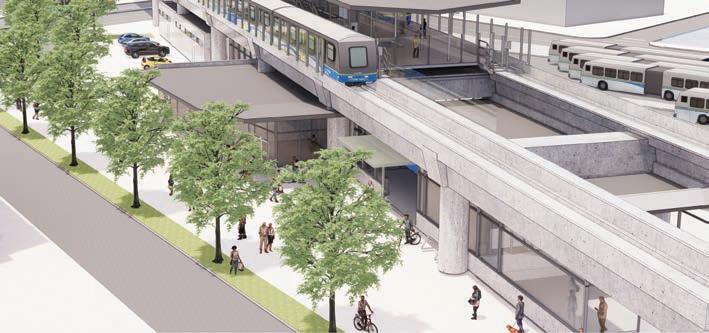
Construction looked set to begin in early 2021, but then-Premier Jason Kenney famously characterized the line as “a train to nowhere” and his government withheld funding for two years. The province eventually supported the project, and PCL Construction was retained to oversee utility relocations. Bow Transit Connectors has since brought in Barnard Constructors of Canada, Flatiron Constructors Canada, WSP Canada, and EllisDon Capital.
With two kilometres of tunnel as well as bridges crossing two rivers and multiple roadways, Phase 1 has its share of complexities, and debate now centres around tunnels, routing, development around stations, and escalating costs. In fact, one founding member of the Ad Hoc Citizens Committee to Rethink the Green Line has publicly described the project as “too big to get wrong.”
Costs are indeed nothing to ignore. The city’s Green Line Board has acknowledged that committed spending has already passed the $1-billion mark, largely going towards design and engineering, preliminary work, land acquisition, utility relocation, and procuring 28 rail cars.
Planning is expected to continue through June, with construction potentially beginning later this year. Proponents say they expect the construction of Phase 1, alone, will generate 20,000 jobs.
“It’s a massive project,” says Ron Glen, CEO of the Alberta Roadbuilders & Heavy Construction Association.
Clearly, the project looks to address growing traffic congestion. The route runs alongside much of the busy Deerfoot Trail, the primary link between north-central and southeast Calgary. “Calgary is a very spreadout city,” Glen says. “This should make the downtown more attractive.”
Phase 2 would run northwards but remains in its earliest planning stages, with some preliminary funding already allocated.
Looking northward in the province, also underway is the Yellowhead Freeway conversion in Edmonton. The largest roadworks program in northern Alberta, it has a valuation of just over $1 billion. Also known as Highway 16, it is a major east-west thoroughfare which the City of Edmonton committed years ago to upgrading.
“The work includes a number of interchanges, reconfigurations and new roadways to accommodate closed roads so that it can become a full freeway,” Glen says. It stands to replace the Calgary and Edmonton Ring Roads as a significant source of jobs.
Bridge projects continue to be a mainstay for construction in Quebec with shovels officially hitting the ground in December for the $2.3-billion Île-aux-Tourtes bridge. The new span will replace a badly aging structure, which was built in 1965 but has experienced ongoing safety closures, frustrating commuters crossing this major access point on Route 40 between Vaudreuil-Dorion and the island of Montreal.
The new six-lane bridge, just north of the existing structure, will offer widened shoulders for bus service and a path for pedestrians and cyclists. Quebec’s Ministère des Transports et de la Mobilité durable plans to open it by 2027, with removal of the original structure expected by 2030.
“This new link will be better adapted to the realities of the region’s citizens, and will ensure a smoother flow of traffic,” Minister Geneviève Guilbault said in a recent public statement.
Other bridge work includes replacing the central slab on the Laviolette Bridge on Route 55 between Trois-Rivières and Bécancour. Pegged at $261 million, it’s slated for completion by mid-2025. And planning is underway to rebuild the Honoré-Mercier bridge on Route 138.
Tunnelling is also active. The current $2.5 billion projected for repairs to the Louis-Hippolyte-La Fontaine bridge-tunnel underneath the Saint Lawrence River near Montreal make that the province’s current biggest-ticket roadworks item, according to the Quebec Construction Commission’s annual economic overview. Completion is expected in 2025. As well, repairs to the Ville-Marie and Viger tunnels, estimated at $2 billion, are forecast to wind up in 2030.
Multiple highway projects in the province include the ongoing $890-million extension of Highway 19 between Highways 440 and 640 in Laval, which is slated for completion in 2027. Phase 3 of some $883.3 million in upgrades
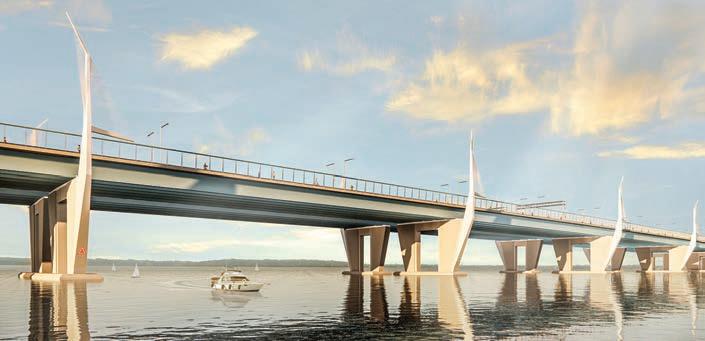
to Route 185 between Saint-Antonin and Bas-Saint-Laurent region near New Brunswick are also scheduled to end late next year. And more than $493 million in improvements are underway along Route 389 between Baie Comeau and Fermont, near the Labrador border.
Public transit projects are also making headlines. In Montreal, an extension of the Metro Blue Line, awarded in 2023, is currently set at $6.4 billion, with substantial completion projected by 2030. One leg of a $6.9-billion undertaking on the Réseau Express Metropolitain (REM) is slated for substantial completion later this year, but further plans remain uncertain.
Xavier Turcotte, spokesperson for the Quebec Road Builders and Heavy Construction Association, says road-related projects, in particular, have been gaining traction, with more work on tap for 2024 than in previous years.
“We’re optimistic,” Turcotte says, adding that a deputy minister from the transport ministry addressed his association’s annual conference and indicated additional infrastructure activity in the years ahead. “We must continue to develop our road network, whether for long distances, the transport of goods, or essential services.”
In Ontario, work continues on the $6.4-billion Gordie Howe International Bridge. Completion is now expected to happen in September of 2025. Crews recently finished the two bridge towers, and tasks now include connecting the two bridge decks over the Detroit River, installing the remainder of 216 stay cables, completing the point-of-entry agency buildings, and concrete work.
Highways are also a high priority. Crews continue to widen Highway 17 from two to four lanes between Kenora and the Manitoba border, and some early works have been underway for more than a year on the 16.3-kilometre Bradford Bypass, which stands to link Highways 400 and 404 north of Toronto. The province retained AECOM Canada to undertake a project-specific
We are up for any challenge. Complex projects are opportunities to demonstrate our unmatched skill, outside-the-box innovations, and unyielding strength. Whether you are looking to replace aging water/ wastewater infrastructure or need a trenchless solution with minimal impact on the surrounding environment, we will exceed your expectations for quality, safety and sustainability.
Partner with Michels Canada and expect more.


 Energy • Infrastructure • Power Construction Solutions For Canada’s Future
Energy • Infrastructure • Power Construction Solutions For Canada’s Future
environmental assessment for the route itself, and requests for proposals stand to be issued early this year for engineering and design and, later this year, for other contractors for the western section.
Less certain are prospects for Highway 413, which would run 60 kilometres through suburbs north and west of Toronto. Preliminary planning and design are underway, but the project remains designated for a federal environmental assessment.
While the Supreme Court of Canada has ruled aspects of the federal Impact Assessment Act infringe on provincial jurisdiction, jurists reaffirmed federal environmental assessments are appropriate if they respect the constitutional division of powers and address matters clearly within national jurisdiction such as indigenous rights, migratory birds, federally protected species, and federally regulated waters and fisheries.
The federal government hasn’t yet stated how it will apply the decision to transportation projects, and so the province has applied to the Federal Court of Canada for a judicial review of Highway 413.
At the annual convention of the Ontario Road Builders Association in February, Premier Doug Ford reiterated his government’s commitment “to ensure that Ottawa can’t impede or stop desperately needed infrastructure projects like Highway 413.”
Meanwhile, work continues on several large public transit projects. Tunnel boring for a 7.8-kilometre, three-station extension of the Scarborough Subway Line is underway, with a projected 2030 service date and cost projections reaching $5.5 billion. And, early site preparation is underway for the Ontario Line, which is expected to cost up to $19 billion and possibly open by 2031.
Nadia Todorova, executive director of the
Residential and Civil Construction Alliance of Ontario, says the province “has done a good job in terms of prioritizing infrastructure investment for transformational infrastructure projects like the Ontario Line, Highway 413, and the Bradford Bypass, and also providing funding for general maintenance of infrastructure assets.”
Ontario Road Builders Association CEO Walid Abou-Hamde, meanwhile, says ORBA fully supports Premier Ford and the Ontario government in asserting provincial jurisdiction over infrastructure development.
Says Abou-Hamde, “We call on our federal partners to join our effort to get these generational projects built.”

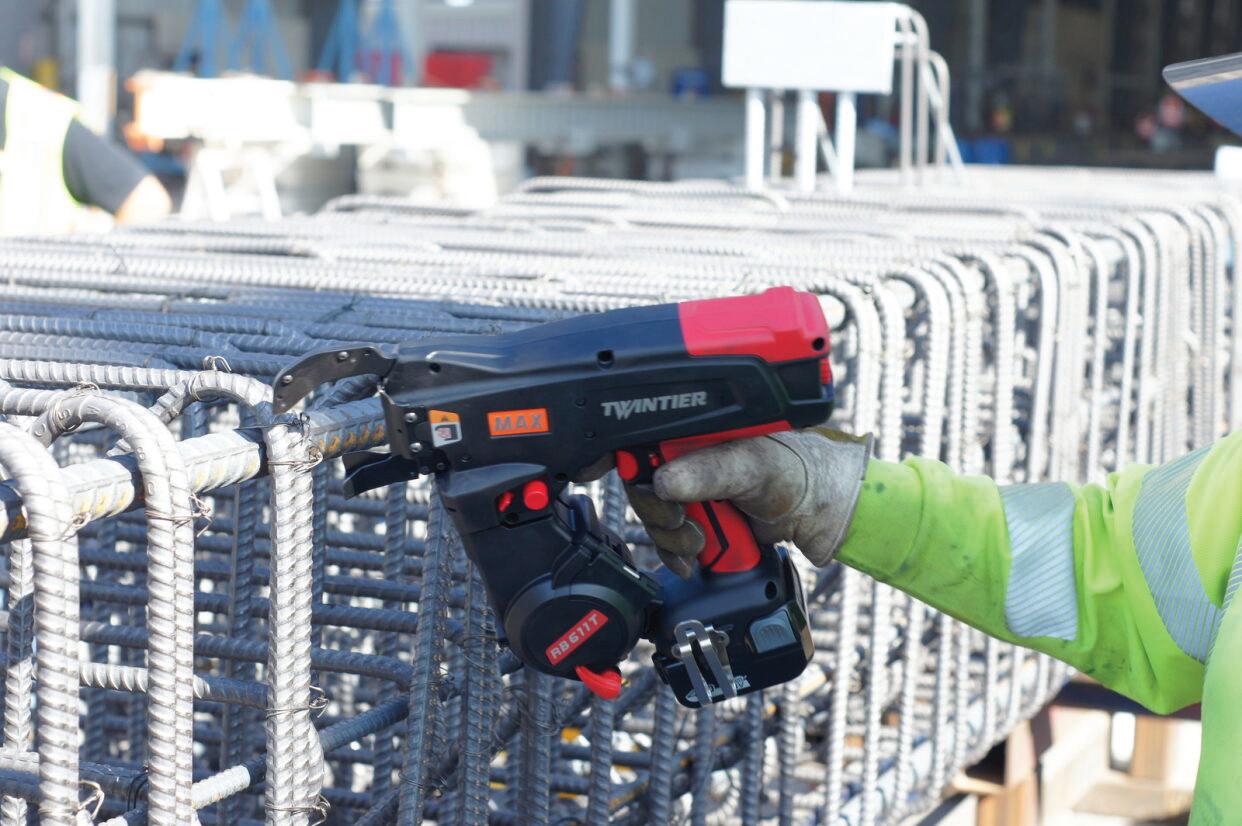



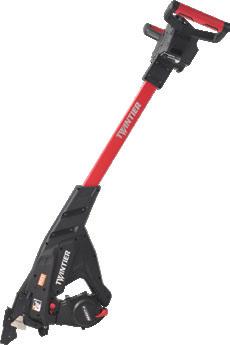




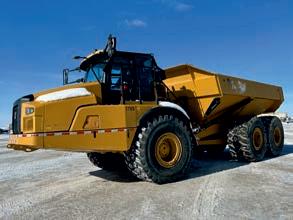


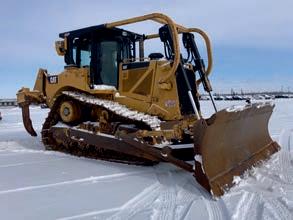





As the backbone of Canadian society, infrastructure plays a critical role in maintaining the quality of life that Canadians have come to enjoy. While, of late, there has been a spike in interest in constructing new roadways, mass transit systems, energy facilities, pipelines, and so forth, there’s also a baseline need to maintain, replace and repair the existing structures that we need to move people and goods, and to stay safe and healthy in our homes and businesses. And despite recent increases in project counts and spending, infrastructure needs seem to always outpace spending.
Government-driven projects, including key infrastructure projects, are providing stability and growth to Canada’s construction sector. To get a better picture of the state of Canada’s infrastructure sector, in February On-Site Magazine welcomed a panel of representatives from key construction organizations to a webinar exploring current infrastructure projects, upcoming projects, and the sector’s prospects going forward.
The panel, moderated by Adam Freill, editor of On-Site Magazine, included Chris
Atchison, president of the B.C. Construction Association, John Casola, chief investment officer at Canada Infrastructure Bank (CIB), Angela Clayton, president of project delivery at Infrastructure Ontario (IO), and Mary Van Buren, president of the Canadian Construction Association (CCA).
“British Columbia’s infrastructure forms the backbone of our provincial economy,” explained Atchison as he introduced his organization and some of its activities. “We never take our eyes off the infrastructure ball. It’s embedded into our mission and our operations as it’s our members in our industry that are building this incredible array of infrastructure that we’re seeing come online.”
Casola explained that Canada Infrastructure Bank was created by the federal government with seed money of $35 billion and a focus on spending across five priority sectors. “Those are public transit, clean power, which involves generation transmission and storage, green infrastructure, which involves carbon capture and low carbon fuels, our building retrofits program, which is very popular and being taken
advantage of, broadband, and trade and transportation, which includes airports, ports, critical minerals, and irrigation infrastructure,” he explained.
Unlike traditional lenders, CIB, he said, is an investor that can afford to take on levels of risk that other lenders would not. “We are a gap filler. We identify what gap is preventing a project from proceeding.” This allows projects to carry forward despite difficulties associated with securing traditional financing, including longer timeframes for investment returns. “We are patient capital; we are created to take more risk than is ordinarily out there.”
His company recently came to the aid of an airport project in Manitoba where the facility was sinking and needed a solution to save an important gateway to the North for many northern Indigenous communities. “Already other businesses are starting to form around that airport, knowing that it’s going to be built,” he said. “So that’s great.”
In Ontario, IO has completed over 100 projects since its inception in 2005, explained Clayton. “Our current program of work is just under $80 billion; 61 projects.”





With a focus on such concerns as risk, market constraints and cost escalations, she explained that the organization has its eyes on project models, the management of available labour, and project costs.
At the CCA, Van Buren says there is a strong desire to establish a national picture and plan for infrastructure.
“Two-thirds of the Canadian economy depends on trade; that trade depends on high quality trade-enabling infrastructure,” she stated. “One of the initiatives that we’re very proud of is the Canada Trade Infrastructure Plan.” That plan calls for a national perspective on infrastructure planning, taking a long-range approach, rather than basing decisions on election cycles. “This plan has received endorsement from premiers across Canada. So that’s something that we’re continuing to champion.”
The association is also focused on workforce capacity, to ensure that Canada has the workers needed, for today and into the future. “A big part of that is working on aligning immigration,” she said. “The way it is, it is not really working to bring in the people that we need.”
All four panellists expressed optimism about upcoming and potential infrastructure projects in the pipeline, although concerns about geographic alignment of workers and staging of projects to match labour availability were raised.
“All across the country, we are seeing unprecedented levels of activity and
deals,” said Casola. “We have closed on almost 60 infrastructure projects worth over $12 billion… along with private capital, we’re close to $35 billion across the country.”
He said that last year CIB closed 26 deals. “This year, we’re on pace to close over 30. And when I look at my pipeline next year, it just keeps growing.”
Infrastructure Ontario’s Clayton painted a robust picture of the segment in Ontario, where the provincial government has made a $185 billion commitment to infrastructure spending over the next decade.
“In terms of projects in construction, we have 29 projects that are in construction, with nine of them reaching substantial completion this year,” she stated, adding that they are among the 61 projects on the organization’s books. “On top of all of that, we have 19 projects that are in the planning stage,” she added. “This government is definitely all-in on infrastructure.”
Van Buren echoed the optimism, adding that government focus on infrastructure extends to other provinces as well. “Premier Kinew, for example, is also quite committed to investing in infrastructure for the Province of Manitoba,” she explained.
There are some concerns about the potential for some softening in the pipeline in British Columbia, however, which Atchison illustrated. “The LNG Canada project, of course, the complementary Coastal GasLink project, our Site C project up in the northeast and Trans Mountain pipeline: Those are four major projects
that have been ongoing in British Columbia for some time, but they are all past peak construction,” he said. “There’s been some concern… as those projects mature and near completion, we need to backfill with new projects in order to retain that workforce.”
Aging infrastructure is also a going concern.
“Unfortunately, we’re not keeping up,” said Van Buren. “We have a significant infrastructure deficit. If you look at the Canadian infrastructure report card, 40 per cent of our roads and bridges are in fair to poor or very poor condition.”
“We need to work on these new infrastructure projects and the existing infrastructure projects in tandem. They’re not mutually exclusive,” added Atchison.
When asked about their view of the next 12 to 24 months, the panel were unified with a significantly positive outlook, however. As Casola summed it up, he is “Very optimistic, despite some of the challenges.”
“We are very optimistic about the next 12 to 24 months,” echoed Atchison. “I think the federal government is listening, they’re paying attention. They’re not kicking the proverbial football down the field any further.”
To view the full webinar session, scan the QR Code, or visit On-Site’s YouTube channel.

The tools of the trade for asphalt paving keep getting tech upgrades.BY NATE HENDLEY
Original equipment manufacturers are continuing their march forward, adding sensors, monitors, automation, and other high-tech features to asphalt equipment. In addition to enhancing efficiency and productivity, these solutions are designed to reduce emissions and bridge a skills gap. Electric power is also becoming more common, and autonomous equipment might soon hit the marketplace. One thing is certain, the paving sector is anything but static.
In late 2021, for example, Volvo Construction Equipment unveiled its CX01, a conceptual single-drum asphalt compactor, at the Utility Expo in Louisville, Kentucky. The CX01 can be operated by remote control or in completely autonomous fashion.
While the CX01 is just a concept for now, “autonomy is definitely a focus we see the industry looking more and more towards,” says Justin Zupanc, head of electromobility and autonomous solutions for road products at Volvo Construction Equipment.
Manufacturers are also “looking for ways to make the machines more productive; more operator friendly—easier for
operators to accomplish the job with less effort,” adds Zupanc.
Given that construction companies are “struggling to find operators” user-friendly software and other solutions can help firms cope with labour shortages and simplify training for new workers, he says.
Another focus is on the quality of the end product. Case Construction Equipment, for example, offers ACE Force Intelligent Compaction technology, which aims to improve compaction quality and reduce the number of passes required to meet target specs. This, in turn, “saves time, fuel costs, and machine maintenance, while avoiding pitfalls related to under or over-compaction,” states Jeremy Dulak, the company’s North American product and marketing manager for dozers and compaction.
With technological change in mind, let’s see what’s new and noteworthy in asphalt equipment.
Volvo introduced the battery electric DD25, the company’s first asphalt electric compactor, at CONEXPO last year. A quiet, low-maintenance, compactor that gives off
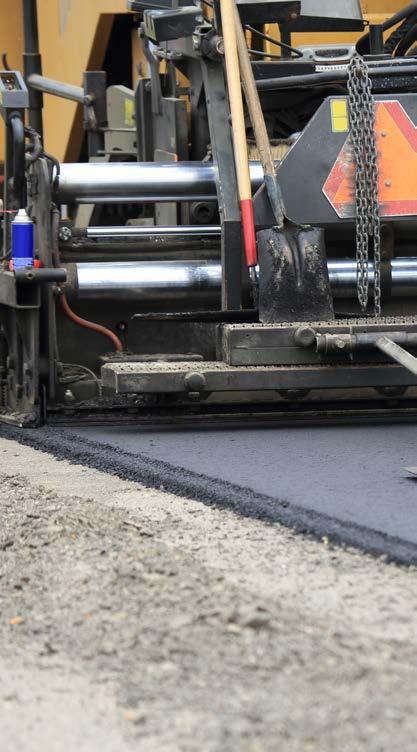
zero exhaust emissions the company says its machine can charge from zero to 100 per cent in three hours, depending on the AC power-level.
“We got a lot of feedback from customers that have tested it and said, ‘Wow! This thing is quiet!’ Even when the drums are vibrating—and they typically generate a lot of noise—the customers were still able to identify the reduction in sound,” says Zupanc.



The double roller DD25 Electric can be used near hospitals, schools, residential neigbourhoods, or other areas where noise might be an issue. The lack of emissions also means it can be used indoors without the need for an elaborate ventilation system to siphon off fumes. And no engine means reduced maintenance.
“You no longer have oil changes. You no longer have filters. You have a hydraulics system, but basically you charge the batteries, and you go,” states Zupanc.
The DD25 Electric has an overall height of 104.3 inches (2,650 mm) and a drum width of 39.3 inches (1,000 mm) in narrow format and 47.2 inches (1,200 mm) in wide format. Given these diminutive dimensions, it’s well-suited for “smaller-size parking lots, driveways, limited shoulder work, patching, some sub-base preparation,” says Zupanc.
Volvo asphalt equipment can be fitted with Company Assist, a solution that provides pass mapping and temperature mapping. The latter is an important detail
as “you want to be able to make sure you’re rolling at the right temperature range. Certain temperature ranges are undesirable,” explains Mike Wasielewski, product owner for asphalt compaction at Volvo Construction Equipment.
More advanced versions of Compact Assist compile data and offer real-time Compaction Measurement Value (CMV), which “gives an indication of the stiffness of the material. As operators reach a CMV that has been specified, they can basically determine when they’re done compacting that area,” he says.
The company also offers a version of “Compact Assist with Density Direct—a real-time density measurement of the output of the machine. After you roll over the mat, you get a real-time density reading of what you’ve just completed,” adds Wasielewski.
Case Construction Equipment has announced its DV23E EP and DV26E EP (Efficient Power) compact double-drum rollers as new entries to its asphalt compaction lineup.
At 24.5 hp (18.6 kW), the EP models “have slightly less power” than their non-EP counterparts [the DV23E and DV26E] but offer “similar compaction output,” says Dulak.
The Efficient Power models “do not require any engine emissions technology to meet Tier 4 Final standards, meaning there’s no diesel particulate filter or exhaust gas recirculation to maintain. All other options, features and benefits are the same as the DV23/26E models,” he continues.
Case has also expanded its single drum vibratory roller lineup with the new SV215E and SV217E soil compactors. Each is fitted with a Tier 4 Final 154 hp (115 kW) engine, and can reach 7.9 mph (12.7 kph). The SV215E weighs 33,420 pounds (15,160 kg) and the SV217E weighs 36,500 pounds (16,555 kg). These models can be equipped with ACE Force Intelligent Compaction and Case SiteWatch telematics.
Vögele, a brand of the international Wirtgen Group, exhibited the Super 700i Mini Class
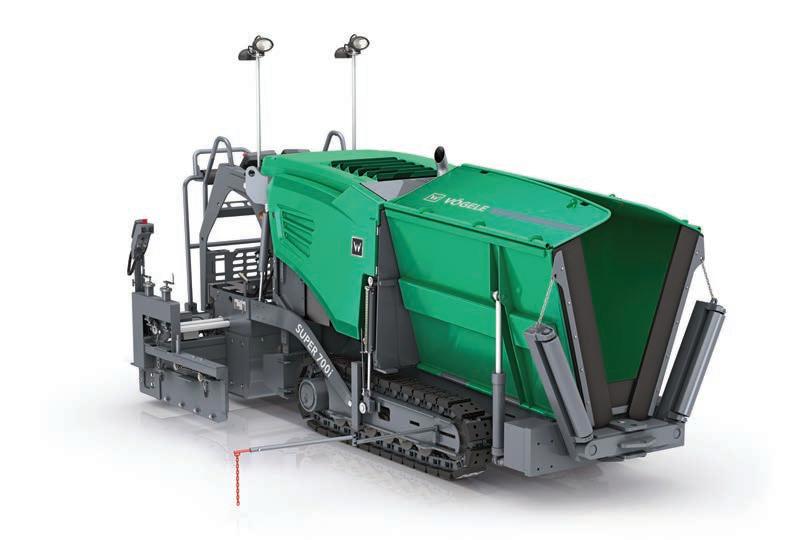
paver, the Super 1703-3i eight-foot paver, and the Super 2000-3i Highway Class paver at CONEXPO 2023 in Las Vegas.
While Vögele pavers and screeds are made in Germany, these particular products are specifically intended for use in North America.
Featuring a liquid cooled four-cylinder diesel engine, the Super 700i paver can pave basic widths ranging from threefeet-11-inches (1.2 metres) to seven-feetthree-inches (2.2 metres) with an AB 220 extending screed.
A compact model, the Super 700i is recommended for paving small areas or doing pavement repairs. It comes with
telematics and an ErgoBasic operating system. This system features status and function indicators, a choice of operational modes, and glare-free backlighting, which helps in nighttime conditions.
The Super 1703-3i eight-foot paver has a four-cylinder, liquid cooled diesel engine, is capable of pave speeds up to 250 feet/minute (76 m/minute), and pave basic widths from eight feet (2.45 metres) to 15-feet-six-inches (4.75 metres) when fitted with a VF 500 front-mounted screed. This paver has an ErgoPlus 3 operating system, Automatic Grade and Slope Control, a RoadScan asphalt temperature measurement system, and is intended for

municipal and commercial applications.
For its part, the Super 2000-3i boasts a six-cylinder, liquid cooled design engine, a maximum laydown rate of 1,540 tons/hour, and has a basic paving width ranging from 9-feet-10-inches (three metres) to 19-feeteight-inches (six metres) when equipped with an AB 600 extending screed. Wellsuited for highway and large-scale commercial work, the Super 2000-3i has ErgoPlus 3, Automatic Grade and Slope Control, telematics, and RoadScan.
Caterpillar has entered into an agreement with Axenox, Inc., a construction solutions provider, to purchase the intellectual properties of an innovative three-dimensional screed plate and accompanying modular screed plate fastening system.
While most screed plates are flat, Axenox uses an angular 3D design to ensure better mat smoothness and higher density, which can reduce the required number of passes, saving time and costs. The 3D cast plates are made from high-strength chromium carbide for durability and longevity. A modular fastening system reduces the time required to change screed plates from days to under four hours.
The plate and fastening system will be available exclusively as options for customers of Caterpillar asphalt paving equipment.
The company also offers Cat Paving Technology solutions for its line of asphalt pavers and screeds. Cat Compact with Compaction Meter Value (CMV) determines material stiffness, while the Cat Grade and Slope system features sensors that detect elevation and makes automatic adjustments. Cat Grade and Slope can be operated and monitored from a paver or screed.
Caterpillar’s Pave Start Assistant is a machine management tool that records paving speed, width, and other metrics to simplify the setup required for repeatable performance.


In the asphalt pavement industry, accurate moisture measurement is vital to producing and laying down a durable, quality surface. Most asphalt mixes contain petroleum additives and water, and the ratio of moisture to solids is critical to the curing process.
To pave roads and parking lots, hot mix asphalt (HMA) is widely used because it hardens quickly and provides good traction. This material is typically mixed at an asphalt plant before transportation to the site by truck or rail car, at which point operators dump the mix into hoppers and then dispense it before heavy rollers compact the surface.
During its journey, the moisture content in the HMA can vary due to environmental conditions or water vapour loss as the HMA mix is heated, stored and dispensed. This variability can be disastrous to the quality, finish, longevity, and even safety of the finished asphalt.
To ensure the moisture content remains consistent, operators would ideally test the moisture content at every step of the way. Unfortunately, moisture measurement tests are rarely or inconsistently conducted. In addition, many moisture meters require calibration, sampling, and time. Many of the tools are not portable or durable enough to be used on heavy construction job sites.
The availability of cost-effective, automated and instant moisture measurement devices is providing the industry with an option, however, and it an option that some
contractors are using to ensure optimal moisture levels from the plant to the paving site.
One traditional approach to test for moisture content involves Loss on Drying testing. This uses a moisture balance to measure the total change in the material weight change of a mixture after drying. However, such tests typically require technicians to prepare a sample to be brought to a lab, and each test takes upward of 15 minutes to several hours to perform. And asphalt samples are not small. Larger samples require a big drying oven, a big pan, and often overnight drying.
To ensure consistent moisture content at HMA plants, the industry now uses Near-Infrared (NIR) light equipment for a highly accurate, non-contact, secondary-measurement method that delivers immediate, laboratory-quality moisture readings.
NIR moisture meters generate accurate instant measurement of solids, slurries and liquids without contact or sample preparation. Available in desktop, handheld portable and inline models, when used with analysis software, inconsistencies can be quickly detected and corrected.
For real-time testing of HMA, either during plant processing or dispensed to and from trucks or rail cars, inline tools can be used for 100 per cent inspection of all mixed materials without having to take samples offline for testing.
Moisture analyzers provide an instant, non-contact, non-destructive measurement
of liquids and solids while the product is moving. For frequent spot checks of materials anywhere in the process, operators can use portable, handheld and instant moisture meters. The user simply points the instrument and the moisture content is instantly shown on a digital display.
Once technicians lay the asphalt, handheld units can also instantly measure not only the road surface but also sublayer moisture to ensure proper curing.
NIR composition analyzers work well for asphalt producers or contractors who want to analyze the composition of the mix as well and, as recycled materials become a larger percentage of the inputs for asphalt production, these analyses will also play a role in documenting the components of the mix.
Some can instantly verify the correct quantity of additives and binders, as well as recycled materials in the mix such as tire rubber, Reclaimed Asphalt Pavement (RAP), Reclaimed Asphalt Shingles (RAS), slags, glass, and even pig manure.
As the asphalt industry strives to improve the quality of its end product, automated instant moisture testing and composition analysis tools are available to play a role in achieving superior quality and performance, which will ultimately translate into greater profitability.
John Bogart is managing director of Kett US, a manufacturer of a full range of moisture meters and other analyzers.